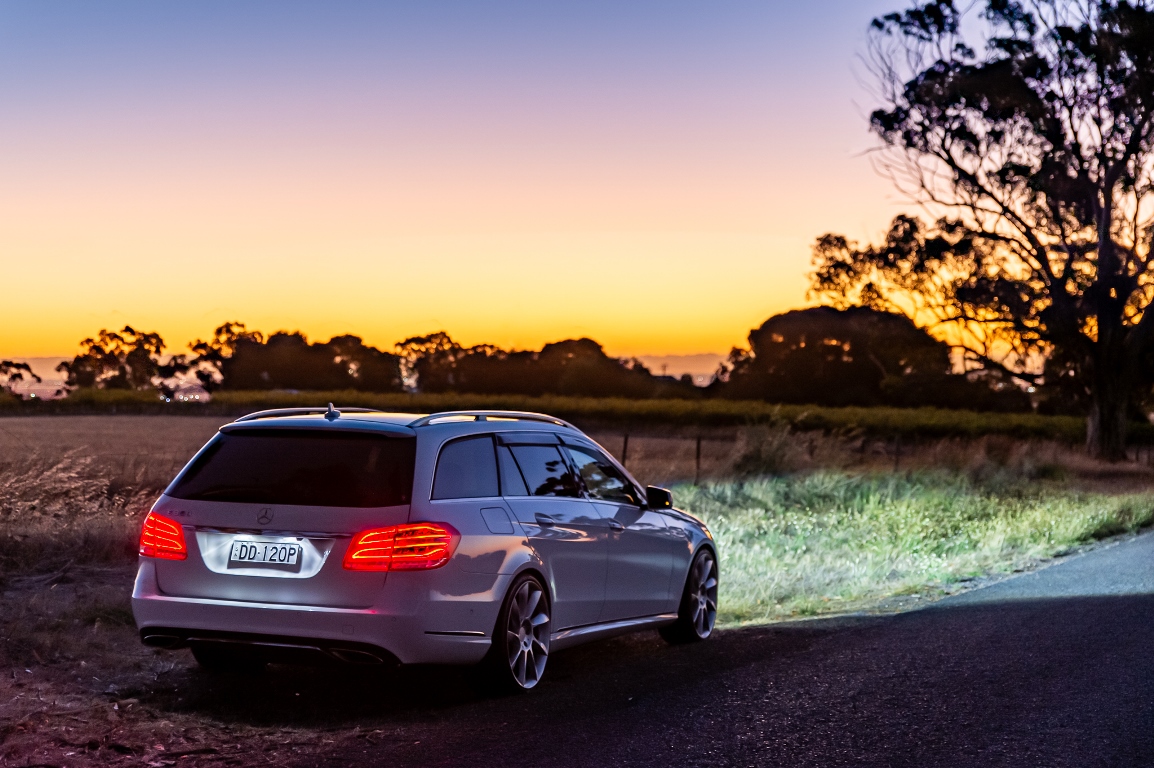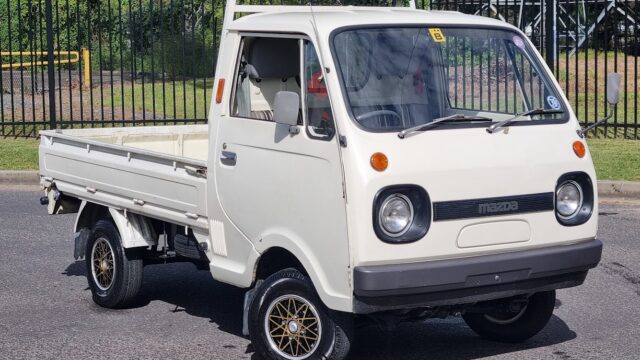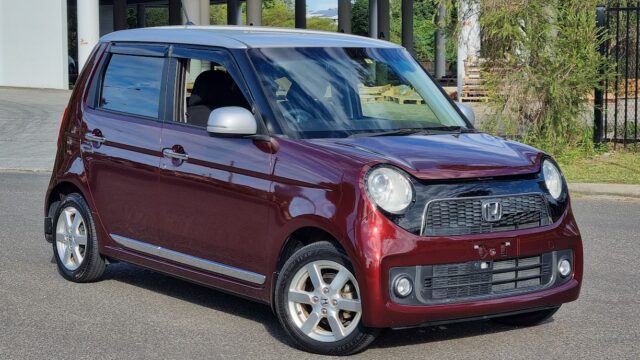I feel a bit dirty writing this: I’ve just imported a Mercedes-Benz from Japan, and apparently, according to my self-diagnosis at least, I am still of sound mind and body.
Before you stop scrolling and move on to MCM or Noriyaro, hear me out on the reasons why I ended up at this point.
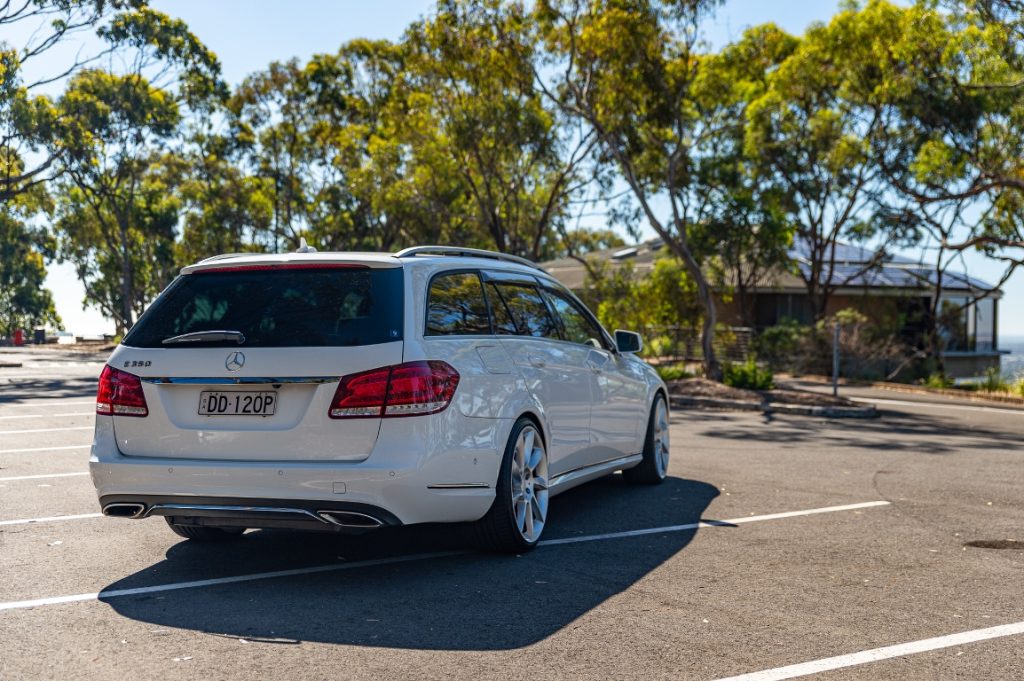
I have a big soft spot for Toyota Crowns, and as someone who normally changes cars like underwear, I owned a particularly lovely GRS204 G package rolling on 20s and coilovers for nearly two years, right through the COVID winter, because it was such a great all-rounder.
“Why didn’t you choose the hybrid, given it has more power?” I hear you ask. The GWS204 has a number of features that the non-hybrid doesn’t, but those were offset against my inherent dislike of CVTs, as well as reports of the occasional battery failure once hybrids are over 10 years old. Thankfully the cost of replacement cells has come down rapidly since then, but even still, I yearned for the simplicity of a RWD, naturally aspirated V6 sedan with a normal gearbox.
My Crown, unsurprisingly, served me well. It looked great (when it was clean), had all the features I wanted and then some, had power when I needed it, wasn’t overly thirsty around town, and was brilliant for long country trips.
There were only a couple of small gripes, one being the lack of “ski port” from the rear seats into the boot, reducing the practicality of the boot space. The other was my own fault: soon after the Crown arrived, I met a new partner, and she owns a labradoodle large enough that, if it learned to walk on its hind legs, would be a perfect match for Chewbacca, both in size and fur type.
Poor old Hazel (the dog, not my partner) needed to be cajoled onto the back seat, and with the Crown’s low roofline, would end up looking like a canine version of the ‘Do you find something comical about my appearance?’ guy from the Simpsons. Between that and me stressing about her gigantic claws digging into the leather (still referring to the dog), it was clear that a wagon was needed.
What would have been ideal, of course, was a wagon version of the GRS204 Crown. Annoyingly, Toyota dumped the wagon versions after the 170-series, leaving the only real Toyota alternative as a Mark X Zio. It has the right motor, but is wrong-wheel drive and is much smaller than the Crown. Imagine it as a family-spec Toyota Blade rather than a serious load hauler that can accommodate a woolly mammoth in the boot.
It quickly became apparent that most large wagons went the way of the dodo in Japan in the late 2000s, making way for crossovers and SUVs. Case in point: the PM35 Stagea, which is the RWD model with the naturally-aspirated VQ35 motor, is a cracking car to drive, with loads of boot space. The problem for me is they’re nudging 20 years old now, so they’re no longer really in the realm of a daily driver, and the Skyline Crossover that replaced it has significantly less boot space and cumbersome on-road handling, courtesy of a higher centre of gravity.
So my challenge became finding a relatively late-model wagon that was 1) rear wheel drive, 2) naturally aspirated V6, 3) driven through a normal, torque converter gearbox rather than a CVT and 4) in a reasonably affordable price bracket that I wasn’t going to stress if a kid spilled a drink on the back seat.
My subsequent trawl through the SEVS Eligibility list unearthed a left-field result: the Mercedes Benz E350 wagon in the 212 series. Some smart cookie had worked out that we never received the naturally-aspirated V6 models here in Australia, and that they were in relatively plentiful supply in Japan.
I’ve always had a soft spot for the 212 series, particularly the facelift model which was one of the first cars that current design chief, Gordon Wegener, worked on when he arrived at Mercedes Benz. The pre-facelift 212 was not well received, and Wegener was given a fair challenge making it look more up-to-date, bearing in mind that most of the pre-facelift panels (such as the door skins and rear tail light housings) had to be retained. As a side note, Wegener then went on to design the 205 C-Class, which is, in my opinion, one of the most resolved small luxury car designs of the 21st century.
But I digress.
The facelift’s lights are one of my favourite things about the 212. They are gorgeous, both front and rear, and well ahead of their time, with the headlights being fully directional LEDs with auto dipping.
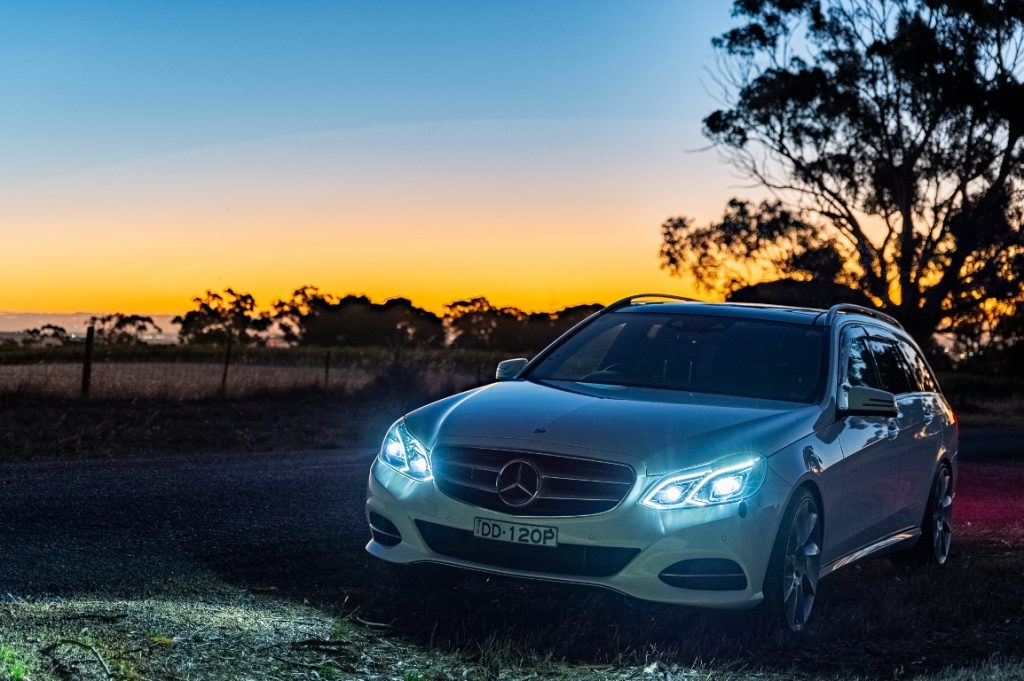
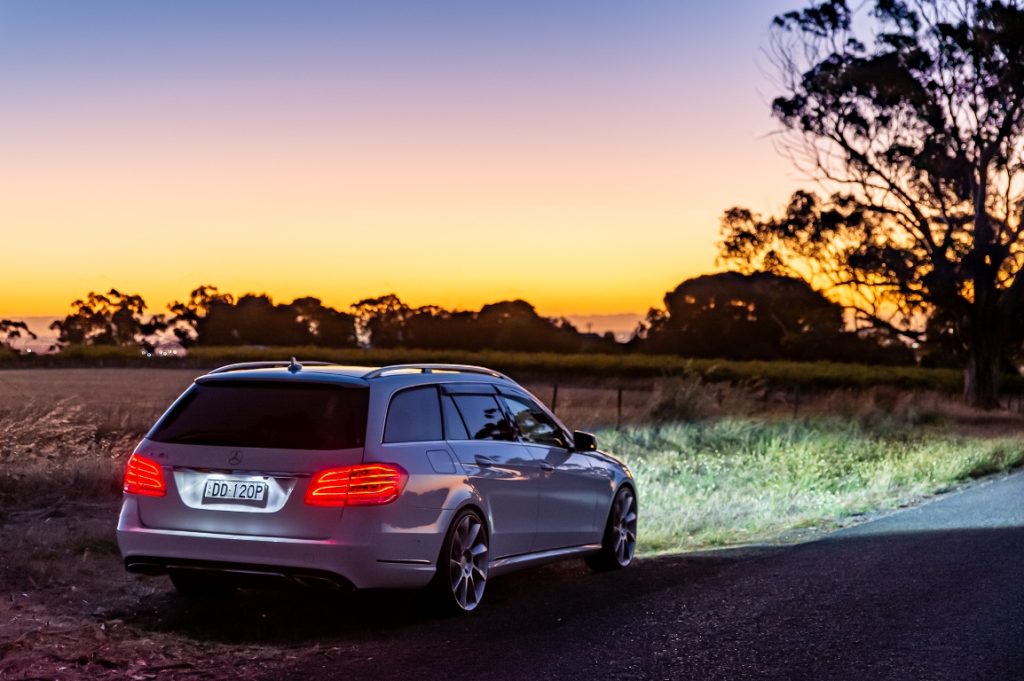
The white 57,000km Avantgarde wagon I ended up buying worked out at similar money to a GRS214 Crown, and came with a full suite of safety features, many of which I didn’t expect to see in a vehicle approaching ten years old. Blind Spot Monitoring, Lane Keep Assist, idle stop, radar cruise control, heated seats front and rear, and even Parking Assist, where you can watch the dash and follow the instructions to get the perfect reverse park every time. Likewise, the radar cruise/lane keep assist combo does a mighty fine job of driving itself on straight roads – not up to Tesla standards by any stretch, but it makes for very relaxed long drives. Like the Tesla, it will tell you off if you take your hands off the wheel for too long.
Like the Crown, the weißerwagen is born for interstate travel at much higher speeds than what Australia will allow. A massive 70-litre tank ensures drivers will be stopping for a refill long before the car does. The 3.5 litre V6 is at its sweetest digging out of low revs using all its torque but doesn’t sound quite as tasty as the 2GR of the Crown at the top end of the rev range. Call it a draw.
One black mark against the 212 design is the horrid standard 18” wheel design on the Avantgarde (the AMG styling version has much nicer wheels and kit, but the car itself has less goodies), so I flicked them for a set of 20” Lorinser turbine-style wheels; shock horror, yes they are reps because I couldn’t find original ones in the widths and offsets I wanted. I’m not normally a fan of this style of wheel, but I had a feeling that they would suit the 212 design language perfectly.
As is my usual form, I purchased the wheels (and full set of Eibach springs) long before the car arrived, only to have the wheel fitment process come to an abrupt halt when we discovered my car was fitted with optional factory airbags…on the rear only. Great for self-levelling when towing, which makes ticking that factory option all but useless in Japan. Stewy from Furbprep managed to instead locate some Airmatic Lowering Links from the UK for the princely sum of about $130! So with the Eibach springs in the front, you have the tasty result you see here in the pics. Fitment is bang on, and I love the end result.
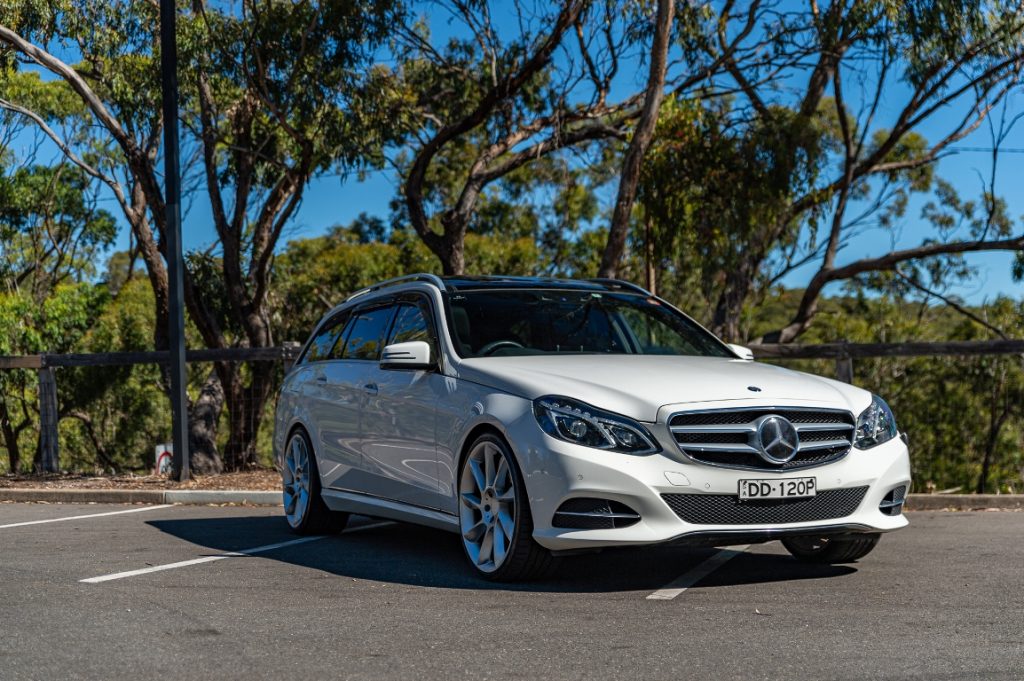
Driving impressions
- Torquey V6 is a lovely unit, as is the 7-speed auto, but it defaults to Eco mode every time you drive it, which blunts the throttle response (a personal hate of mine). I’m sure there is probably a setting that defaults it to off somewhere but I haven’t found it yet.
- The Airmatic rear suspension has an auto levelling function, which comes in very handy when running big rims and tyres. Load the rear up with passengers and you can hear the pump working away to lift it back up when you start the car.
- Ride is generally pretty decent, but there’s no escaping the fact that running licorice straps for tyres and Australian potholes are not a great mix. I’m sure it’s fine on the factory 18s. Think of it as sacrificing comfort for style.
- As someone who normally drives cars with halogen or occasionally xenon lights, the multidirectional LED headlights are astoundingly good at night. Literally the best safety advancement in the last 20 years.
Good points
- Solid engine at its best burbling around at low revs
- Meaty, responsive steering
- Auto levelling of the Airmatic rear suspension
- LED headlights are brilliant
- A LOT of kit for the money in terms of features
- Rear can swallow a load bigger than…well, something really big, especially with the rear seats down
- I haven’t tested the theory but I suspect it would be an awesome tow car
- Lots of neat little touches, like parking lights staying on briefly at night after you lock it, so you can look back and appreciate how sexy it is
- Badge cred and modern styling – your family and friends will think you’re loaded
Bad points
- Throttle response in Eco mode
- It can be hustled but in the end it’s not really a sports car
- Indicator stalk on the left takes some getting used to
- Foot-operated parking brake seems a bit old-school, but those familiar with Toyotas will appreciate the familiarity
- Mercedes-Benz Australia will probably turn their noses up at you if you go there for servicing, but that’s no great loss
- Your family and friends will think you’re loaded
Unfortunately for me, the car I bought to replace it (another Euro wagon – feel free to guess) arrived here in record time, meaning this one will shortly be on the market. Keep an eye out for it on the website soon.
